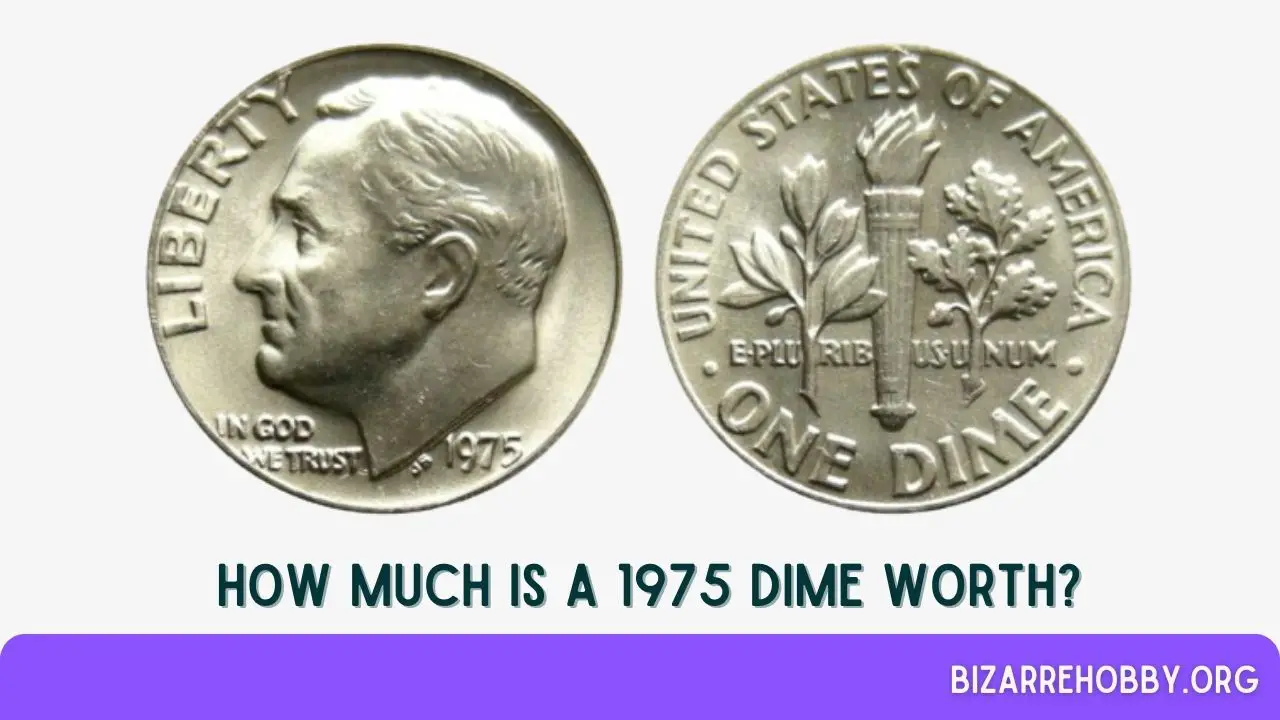The 1975 dime, part of the Roosevelt dime series, holds significant value for collectors. But what makes some of these coins particularly valuable?
In this article, we’ll delve into the value of the 1975 dime and the factors that influence it. We’ll explore the differences between circulated and uncirculated coins and identify the types of Mint errors that can increase their worth.
Ready to uncover more? Let’s dive in!
Table of Contents
Value Chart of 1975 Dime
| Mint mark | AU58 | MS60 | MS65 | MS67 |
|---|---|---|---|---|
| 1975 No Mint Mark Dime Value | $1 | $4 Full band: $4 | $30 Full band: $60 | $200 Full band: $2,250 |
| 1975 D Dime Value | $1 | $4 Full band: $4 | $7 Full band: $30 | $40 Full band: $550 |
| PR60 | PR66 | PR68 | PR70 | |
| 1975 S Proof Dime Value, Deep Cameo | $4 | $8 | $12 | $115 |
| 1975 No S Proof Dime Value | NA | $350,000 | $525,000 | NA |
Historical Significance of the 1975 Dime
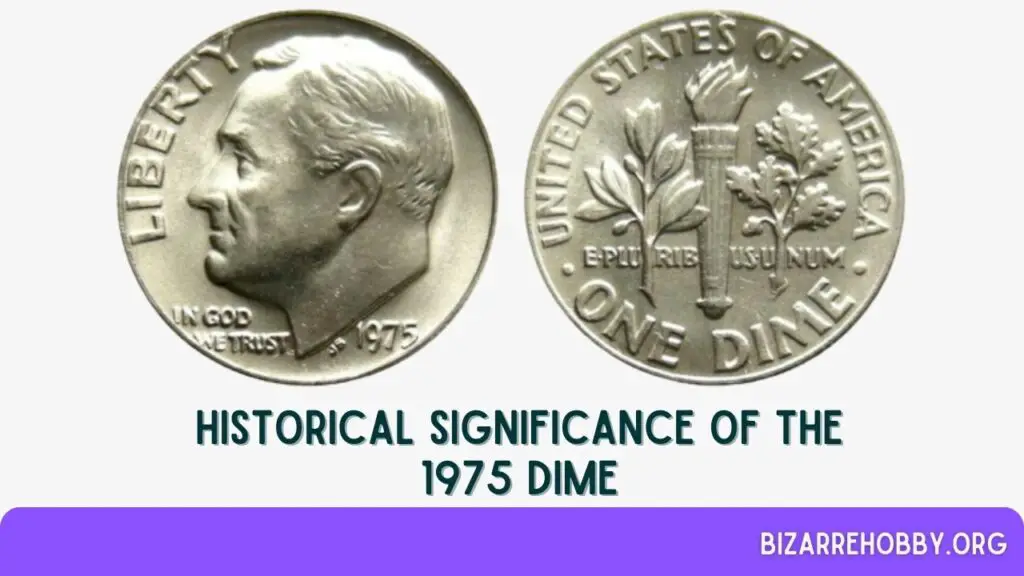
The 1975 dime, known among collectors as a Roosevelt dime, features the image of former U.S. President Franklin D. Roosevelt on its obverse side. This design choice honors Roosevelt, who was instrumental in founding the March of Dimes, an organization dedicated to combating polio.
First minted in 1946, just a year after Roosevelt’s death, these dimes were initially composed of 90% silver and 10% copper.
However, the rising cost of silver led to a change in 1965, when the composition was altered to a copper core clad in an alloy of 75% copper and 25% nickel. This composition remains standard today, except for special collectors’ editions.
Design of the 1975 Dime
The 1975 dime, part of the Roosevelt dime series, is notable for its detailed design and historical significance. Let’s dive into the obverse and reverse design of 1975 dime.
Obverse Design of 1975 Dime

The obverse of the 1975 dime showcases John R. Sinnock’s portrait of Franklin D. Roosevelt. Roosevelt’s profile faces left, with the word “LIBERTY” curving along the left edge. Below his neck, the motto “IN GOD WE TRUST” and the date are inscribed, along with Sinnock’s initials.
Mint marks, if present, appear above the date. A “D” indicates the coin was minted in Denver, an “S” in San Francisco, and no mark signifies Philadelphia.
Sinnock faced significant challenges from the Commission of Fine Arts, which repeatedly rejected his designs. After multiple revisions and consultations, the design was finally approved, albeit with some tension between the Commission and the Mint.
Reverse Design of 1975 Dime
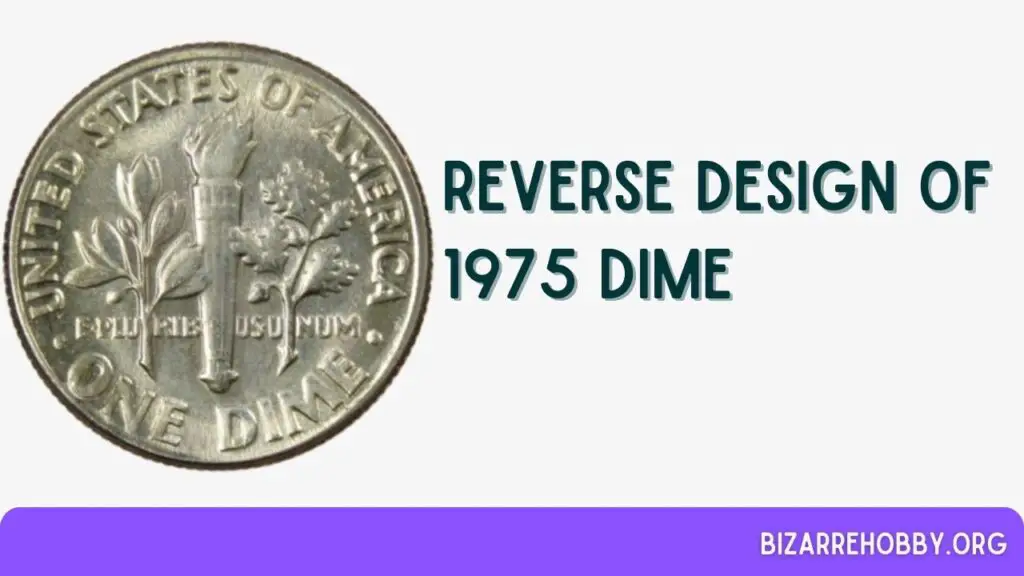
The reverse, also designed by Sinnock, features a torch flanked by olive and oak branches, symbolizing liberty, peace, and strength. The country’s name curves along the top edge, while “ONE DIME” is inscribed at the bottom. The Latin motto “E PLURIBUS UNUM” runs through the torch and branches, reflecting the unity of the states.
Technical Specifications of 1975 Dime
Some 1975 dimes are designated as “full band” (FB) or “full torch” (FT), indicating a strong strike. To qualify, the horizontal bands on the torch must show clear separation, and the coin must be graded at least MS60 by the Professional Coin Grading Service (PCGS) or Numismatic Guaranty Corporation (NGC). The NGC also requires clear separation of the vertical strips on the torch.
Grading Guide for 1975 Dime
Understanding the value of a 1975 dime begins with its grading. Here’s a quick reference for the grading scale:
| Sheldon Scale | Grade |
|---|---|
| 1 | Basal State-1 |
| 2 | Fair |
| 3 | Very Fair |
| 4, 5, 6 | Good |
| 7, 8, 10 | Very Good |
| 12, 15 | Fine |
| 20, 30 | Very Fine |
| 40 | Extremely Fine |
| 50 | About Uncirculated |
| 60 | Mint State |
| 65 | Mint State |
| 70 | Mint State |
For a detailed understanding of how to grade your Roosevelt dime, please refer to our comprehensive grading guide for Roosevelt Dime. Accurate grading is essential to determine the precise value of your coin.
1975 Dime Value Guides
Understanding the value of a 1975 dime involves examining various factors, including its mint mark, condition, and any unique features such as the full band designation. Coins from the Philadelphia, Denver, and San Francisco Mints each have distinct characteristics and values.
Whether you have a circulated coin or a pristine proof, knowing these details can help you determine its worth accurately. Let’s explore the specific values for 1975 dimes from each mint and see how their condition impacts their market price.
1975 No Mint Mark Dime Value

The Philadelphia Mint produced nearly 586 million dimes in 1975. According to the PCGS, approximately 1.2 million of these coins qualify for the full band designation today.
For a 1975 no mint mark dime to be worth more than its face value, it must be in excellent condition. An “about uncirculated” coin graded AU58 is valued at around $1. A mint state MS60 example is worth about $4, regardless of whether it has the full band designation.
However, at higher grades, the full band designation significantly increases the coin’s value. An MS65 standard 1975 dime is valued at approximately $30, but with the full band designation, its value nearly doubles to $60.
As the grade increases, the coin’s availability decreases, and its value rises. An MS67 1975 no mint mark dime is worth around $200, while a full band example can fetch over $2,250.
1975 D Dime Value

The Denver Mint produced around 314 million dimes in 1975. The PCGS estimates that about 628,000 of these coins survive across all grades.
For coins graded up to MS60, values are similar regardless of the presence of a D mint mark. In circulated grades, these coins are worth only a few cents. At AU58, they are valued at around $1, and at MS60, they are worth about $4.
In higher grades, the full band designation adds significant value. A standard 1975 D dime graded MS65 is worth about $7, while a full band version can be valued at around $30.
The highest known full band 1975 D dime is graded MS68. Although there is no public sales data for this coin, the PCGS values a slightly lower MS67+ full band coin at $1,250.
1975 S Proof Dime Value
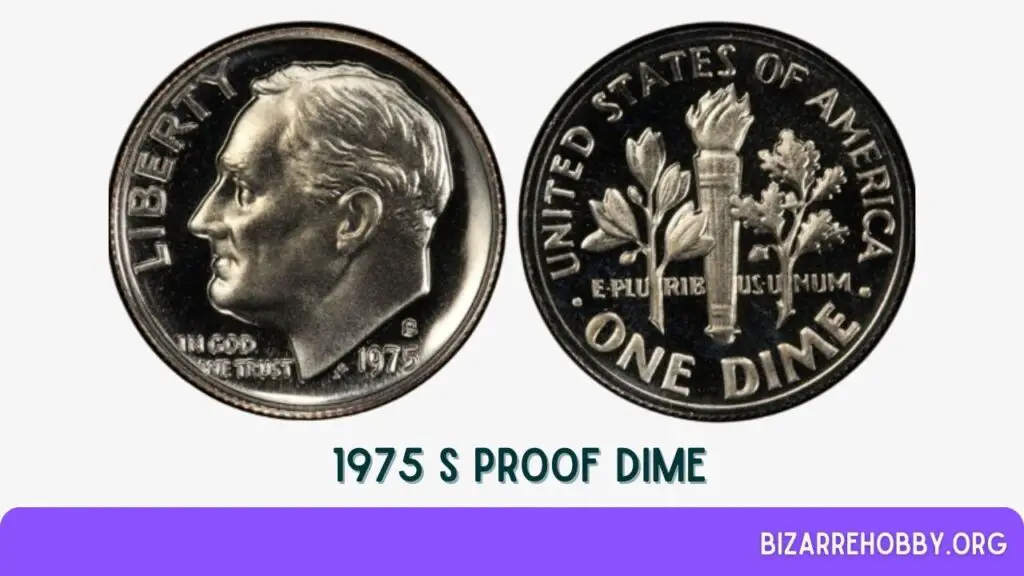
In 1975, the San Francisco Mint produced just over 2.8 million proof dimes, specifically for collectors. These coins were made using highly polished planchets and detailed dies.
Today, the PCGS estimates that around 2.3 million of these proof dimes survive. The low attrition rate is likely due to their initial marketing as collectors’ items, making it possible to acquire a high-quality proof coin without a significant investment.
A deep cameo proof graded PR60 is valued at around $4. Even a perfect PR70 deep cameo proof is modestly valued at $115 by the PCGS.
Rare 1975 Dime Error List
Certain errors in the minting process can make 1975 dimes exceptionally valuable to collectors. These errors are rare and often result from mistakes during the coin’s production, such as missing mint marks or re-punched marks. Let’s explore some of the most notable errors found in 1975 dimes.
1975 No S Proof Dime Error
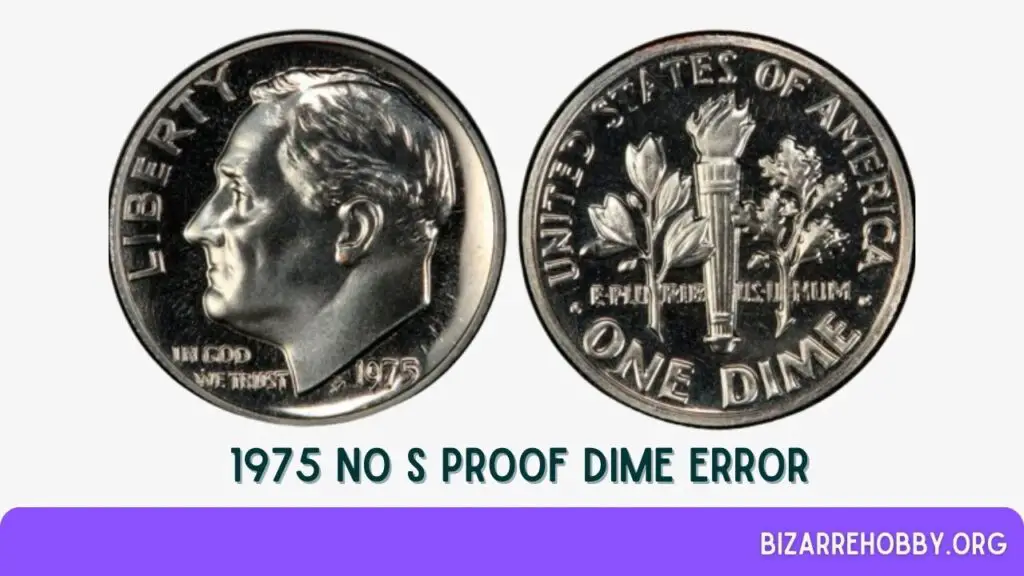
While most 1975 proof dimes aren’t particularly valuable, the “no S” variety is a notable exception. This error occurred because the proof dies, prepared in Philadelphia, lacked the “S” mint mark for San Francisco.
As a result, some proof dimes from 1968, 1970, 1975, and 1983 were struck without the “S” mark. In 1975, only two such dimes have been discovered, making them extremely rare and highly valuable. One example graded MS66 is valued at $350,000, while another graded MS68 is worth $525,000.
1975 S/S Proof Dime, Re-punched Mint Mark
Another error affecting the 1975 proof dimes is the re-punched mint mark, where an “S” is punched over another “S”. This error is less rare than the “no S” variety but still significant. The value of these coins depends on their condition.
For instance, a near-perfect PR69 deep cameo example with this error can be worth $800, compared to just $16 without the error.
Where to Sell Your 1975 Roosevelt Dime?
Knowing the value of your 1975 Roosevelt dimes is just the first step. The next is finding the right platform to sell them. There are several reputable online marketplaces where you can sell your coins easily. Each platform has its own advantages and disadvantages, so it’s important to choose the one that best suits your needs.
Please check my detailed guide on where to sell coins online. I have listed all the online platforms including their pros and cons.
What to look for in the 1975 Dime?
When evaluating a 1975 dime, several key factors can significantly influence its value. First, check for the mint mark. Coins from Philadelphia have no mint mark, while those from Denver and San Francisco are marked with a “D” and “S,” respectively. Next, assess the coin’s condition. Uncirculated coins with a high grade, especially those with a “full band” or “full torch” designation, are more valuable.
Additionally, look for rare errors such as the “no S” proof dime or the re-punched “S/S” mint mark. These errors can dramatically increase the coin’s worth. Finally, consider the coin’s overall appearance, including its luster and any signs of wear or damage.
FAQs On 1975 Dime Value
Which 1975 dime is worth money?
Most 1975 dimes are only worth their face value. However, coins in excellent condition or those with unique Mint errors can be significantly more valuable. For instance, a 1975 dime graded MS67 with a “D” mint mark is worth around $40, while a similar coin without a mint mark can be valued at approximately $200. Coins designated as “full band” or “full torch” are also more valuable, but these are typically uncirculated and unlikely to be found in everyday change.
How do I know if I have a 1975 “no S” dime?
Many 1975 dimes lack mint marks, but almost all of these were minted in Philadelphia and are only worth their face value in circulated condition. A “no S” dime, however, is a proof coin with a mirror-like surface and fine details. If you have a proof coin without a mint mark, it could be extremely valuable. To date, only two such examples have been found, with the least expensive valued at $350,000.
Final Thoughts
The 1975 dime is a fascinating piece for collectors, offering a blend of historical significance and potential value. Whether you’re a seasoned numismatist or a casual collector, understanding the factors that influence a coin’s worth is crucial.
From mint marks and grading to rare errors, each detail can make a significant difference. By carefully examining your 1975 dimes and staying informed about market trends, you can make the most of your collection.
